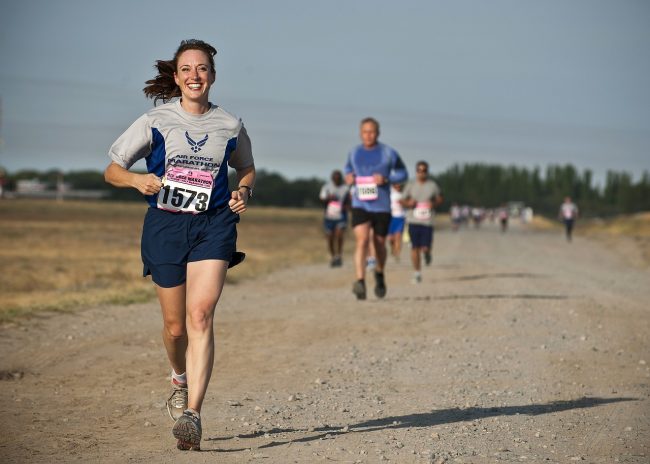One Foot In Front Of The Other Is Harder Than It Sounds!
Published on
19 Oct 2015

Call us on: (03) 9975 4133
Running is a great form of aerobic exercise that is excellent for cardiovascular fitness and general well being. Including a strengthening program alongside your running training can drastically improve your running technique and efficiency. This will not only help to reduce your risk of injury but actually improve your performance, making the last few kilometers much more manageable.
First off, huge congratulations to all of you that completed your running events yesterday as part of the Melbourne Marathon Festival. Whether it was your first running event or you were aiming to beat your personal best – a fantastic achievement all round.
Running is a great form of aerobic exercise that is excellent for cardiovascular fitness and general well being. It is also a popular form of exercise for those of you wanting to get a little fitter and maintain a healthy weight. Often the more you start running, the more you enjoy it and the more you want to improve with regards to times and technique.
It is extremely important that you have strong muscles for running, and interestingly, a large proportion of runners don’t include a strengthening component into their running program. Instead, it seems to be a popular belief that you will develop the strength you need to run by running. It would be great if it were that easy but unfortunately, this is not the case! Generally, the longer you run, the more you will fatigue and the more your muscles will tire. This will then have a negative effect on your running technique, which is when an injury is most likely to occur.
The most current research surrounding running related injuries suggests that as you become fatigued, you are more likely to heel strike out in front of your centre of gravity. This can lead to shin pain as foot placement in front of your body serves more of a brake function, rather than helping to propel you forward. Additionally, this position does little to absorb the impact we naturally get from running, and instead the shock is absorbed higher up the kinetic chain, most notably through the shin and lower leg muscles leading to pain.
There is much debate on whether it is better to heel strike or forefoot strike when you are running, when in reality it is more important to focus on where you are striking your foot in relation to your body. Ideally, this should be directly underneath your centre of gravity. Unfortunately, when fatigue sets in, it is our main focus to just put one foot in front of the other without much regard for where we are placing it!
Including a strengthening program alongside your running training can drastically improve your running technique and efficiency. This will not only help to reduce your risk of injury but actually improve your performance, making the last few kilometers much more manageable.
If you are looking to improve your running performance, whether you have another event on the horizon or just simply want to get the most out of the time you spend running, the physiotherapists at Pure Physio can complete a detailed running assessment and provide an individual training program for you to work towards.


